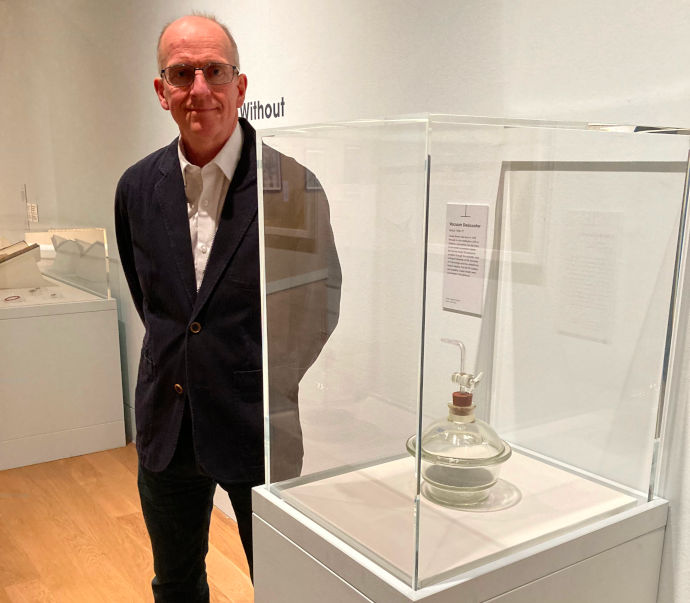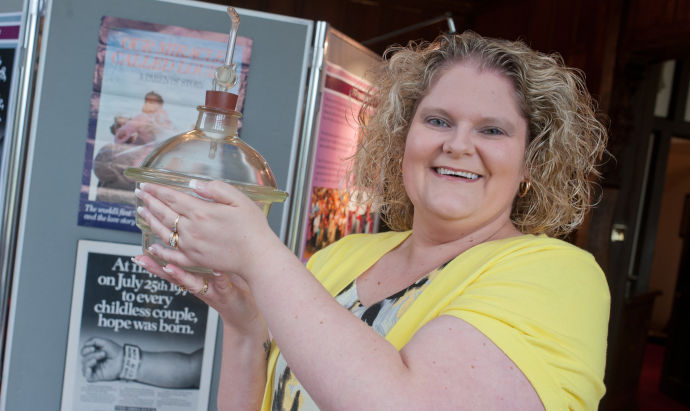What is a family? Scientific innovations and societal acceptance of long suppressed identities and communities have brought far-reaching changes to the concept of family. A new exhibition at the Fitzwilliam Museum in Cambridge, ‘Real Families: Stories of Change’, asks us to consider what makes a family today, and the impact our families have on us, through the eyes of contemporary artists.
IVF has been pivotal in enabling some of these changes. The exhibition features one of the original glass desiccators – part of an early incubator of the type used by the IVF pioneers, Patrick Steptoe, Robert Edwards, and Jean Purdy, to conceive the world’s first test-tube baby Louise Brown.
Story of change
Martyn Blayney, Director of Science at Bourn Hall, was trained as an embryologist by Professor Sir Robert Edwards. He has lent the desiccator (a sealable enclosure) to the museum.
He says: “Although IVF was developed primarily to help infertile women with blocked fallopian tubes, technological advances in all aspects of infertility treatment are enabling a greater diversity of people become biological parents.
“We have a wide range of techniques to overcome both male and female factor infertility and those requiring donated eggs and sperm.
“These advances are now enabling LGBTQ+ couples to create families in a way that would have been unimaginable 50 years ago.”
Indeed, these societal changes are making the Human Fertilization and Embryology Act, which first came into law in 1990, seem very out of date and a significant review is now underway.
The technology has also changed, particularly the incubators. Martyn says that it was important in the early days to have incubators where the embryologists could manually check and control the atmosphere in which embryos were cultured. “They are not in use these days as modern incubators are far more sophisticated and are able to do this automatically.”
Still making families
Whilst technology may have changed the fundamental motivation to help people have families remains the same for Martyn.
“The central doctrine of Professor Edwards’ teaching was to handle each embryo as if it were your own, a philosophy we still impart to our staff today,” he says. “The feeling and sense of achievement I feel today at the sight of a beautiful embryo evokes something in me that is as strong today as when I first started at Bourn Hall more than 30 years ago.”

Real Families: Stories of Change is free to visit at the Fitzwilliam Museum, Cambridge until 7 January 2024. The exhibition was developed in collaboration with the Centre for Family Research at the University of Cambridge and features over 120 artworks including painting, photography, sculpture, film, and installation. For further information visit fitzmuseum.cam.ac.uk/.
Top image shows Louise Brown holding the desiccator at the launch of her autobiography at Bourn Hall in 2015.






